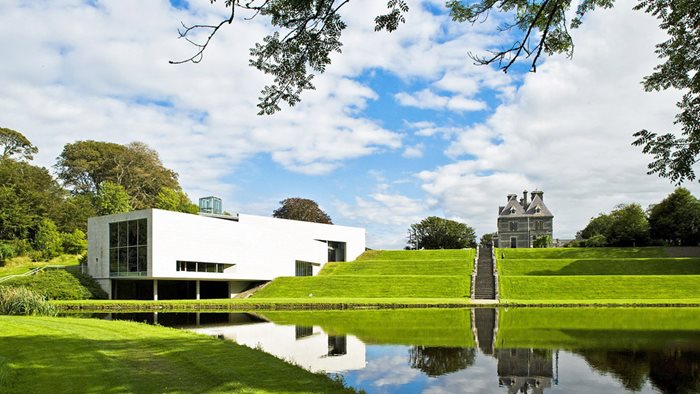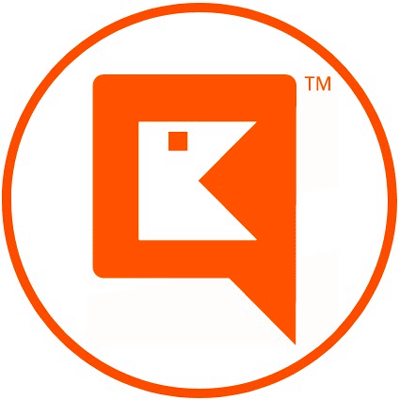National Museum – Country Life

The National Museum of Ireland – Country Life opened in the spectacular grounds of Turlough Park, Co. Mayo in September 2001. The new Museum site was achieved as result of a co-operation involving the National Museum of Ireland, the Department of Arts, Heritage, Gaeltacht and the Islands, the Office of Public Works and Mayo County Council.
The Country Life complex includes exhibition galleries, storage facilities for the reserve collection, education rooms, and a conservation laboratory. The exhibition galleries are housed in a purpose-built stone-clad building designed by the Architectural Services of the Office of Public Works.
Country Life is home to the national collection of objects representing the traditional way of life in Ireland since 1850. Permanent Exhibitions include:
•Romanticism & Reality
•The Natural Environment
•The Times
•Trades and Crafts
•Activities in the Home
•Working on the Land and Water
•Life in the Community
Temporary Exhibitions
Straw, Hay and Rushes
A rush riding saddle, a straw hen’s nest, a hay pack panel and lots of baskets, beehives, mats and mattresses, chairs and collars, spancels and seats.
This temporary exhibition shows the ingenuity of those who could make something from nothing when money was scarce and natural materials were more plentiful and appreciated.
The Museum curator has used an old style display case – a cabinet of curiosities – to include as many interesting objects as possible.
Is the mattress comfortable to lie on? Is the chair soft and smooth or hard and scratchy? Come and see for yourself at this wonderful interactive display.
This exhibition continues on display for another year.
Hair hurling balls: Earliest artefacts of our national game
This exhibition features 14 hurling balls made from matted cow hair with a plaited horsehair covering. The Museum’s oldest-known hurley is also on display. All the balls dated to the late seventeenth century or earlier. The earliest was made in the second half of the twelfth century – that’s 800 years old!
The exhibition uncovers the story of each one – where they were found, how they were made, their age and how they measure up to the modern ball. The exhibition also centres on the scientific research used to untangle the mysteries of these balls. The scientific analysis and research undertaken by the Museum over the past four years shows us what goes on behind the scenes in Museums. This revealed so much more than the naked eye could see…
Munster features strongly with finds from Clare, north Kerry, west Limerick and Tipperary (One is in Cork Public Museum and one is in Kerry County Museum). There are also balls from east Sligo and the latest ball into the National Museum of Ireland collection is from north Mayo. All were found through hand cutting turf in bogs over the past 100 years.
The exhibition will also include examples of hurleys from our recent past and sliotars from our hurling legends of today.
The exhibition runs until May 2014.
Permanent Exhibitions
Romanticism and Reality
Life in rural Ireland is popularly portrayed as simple and romantic. The reality was different. Life was a struggle and survival depended on a detailed knowledge of the landscape and environment; on craft, skill and ingenuity. This way of life changed little over many hundreds of years and its continuity is evident in the similarities between recently-made objects and their counterparts made long ago. This exhibition also highlights the importance of Folklife, which deals with objects, the skills needed to produce them and their place in the lives of the people; and Folklore, which deals with stories, myths and traditional beliefs outside formal religion.
Location: National Museum of Ireland – Country Life, Level A
The Natural Environment
Communities relied on the resources available in the immediate natural environment for self-sufficiency and survival. This exhibition looks at how the way of life in rural Ireland was influenced by the landscape and its resources. This is explored through vernacular architecture and illustrated by using different raw materials to make similar objects.
Location: National Museum of Ireland – Country Life, Level B
The Times
The period 1850 – 1950 in Ireland saw many political, economic and social changes. The most significant was the struggle for and achievement of independence from Britain. At the same time Irish tenant farmers struggled to become owners of the land they worked. This exhibition provides historical context, emphasising the immediate post-Famine period, the Land War, the Land League and Home Rule agitation of the late 19th Century, and the final resolution of the land question in post-independent Ireland.
Location: National Museum of Ireland – Country Life, Level B
Trades and Crafts
This exhibition contains the objects relating to the various skills practised in rural Ireland between 1850 and 1950. It also displays the methods, tools and produce of the blacksmith, tinsmith, wheelwright, wood turner and carpenter, country cooper, harness maker, thatcher, basketmaker, tailor and cobbler.
During this time, most of the objects that people needed for their daily lives were made by hand using locally available raw materials. Many householders, adept in a range of crafts, provided for their own needs by making objects such as wicker baskets, wooden furniture and clay vessels. However, most objects were made by local craftsmen such as the blacksmith or wood turner.
Although the objects made by the country craft workers were often beautiful in form, they were primarily influenced by practical use or function rather than aesthetics. Traditional craft workers generally didn’t use written measurements or patterns; they relied instead on the skill and accuracy developed through many years of rigorous apprenticeship and experience. Their skills were passed from one generation to the next, often within the same family, resulting in several generations of craft workers who kept traditional patterns and forms in the objects they created. Their tools were greatly valued and usually made by the local blacksmith, wood turner or carpenter. Those tools were also handed down from one generation to the next. These craftsmen were very important members of the community, providing the necessary goods and services to the local people, and were highly respected for their skills.
Activities in the Home
Almost all daily activities were centred around the hearth. The hearth had to be kept in good working order to cook food, clean and dry clothes, and do handwork by firelight. This exhibition deals with building, maintaining and furnishing a house. It also explores feeding and clothing the family and the various activities associated with these processes including trades, craftsmen and craftswomen.
Location: National Museum of Ireland – Country Life, Level -2, Turlough Park, Castlebar, Co. Mayo
Working on the Land and Water
Farmers and their families worked throughout the year to grow food and collect fuel. They had to organise their lives around the changing seasons, ensuring that every task was completed despite the unpredictability of weather and health. These tasks included managing livestock, cultivating potatoes and cereals, and the cutting and saving of turf. Sea and fresh water fishing were also important. This exhibition explores these activities and deals with the various trades that supported them.
Location: National Museum of Ireland – Country Life, Level C
Find out more in this exhibition at the Museum of Country Life – where admission is FREE.
Public facilities, including a restaurant, bookshop and library, and staff offices are located in the Victorian Turlough Park House – formerly the home of the Fitzgerald family. The original drawing room and library of the ‘Big House’ are open to the public and furnished as they may have looked in 1900.
In addition to schools programme the Museum offers Workshops and Craft Demonstrations. Workshops encourage participants to see and interact with the collections in alternative ways while introducing specific skills and techniques. Craft demonstrations are given by skilled craftspeople who introduce students to a range of traditional crafts. Crafts include basket making, straw work, spinning, weaving and butter making.
Castlebar
Co Mayo
Monday 13:00 - 17:00
Tuesday 10:00 - 17:00
Wednesday 10:00 - 17:00
Thursday 10:00 - 17:00
Friday 10:00 - 17:00
Saturday 10:00 - 17:00
Sunday 13:00 - 17:00
